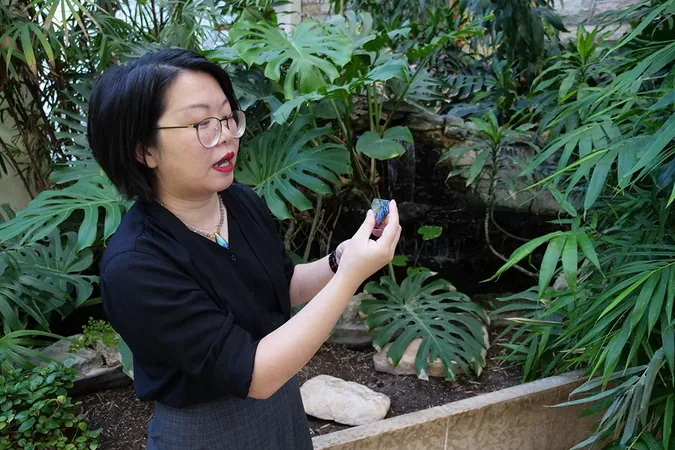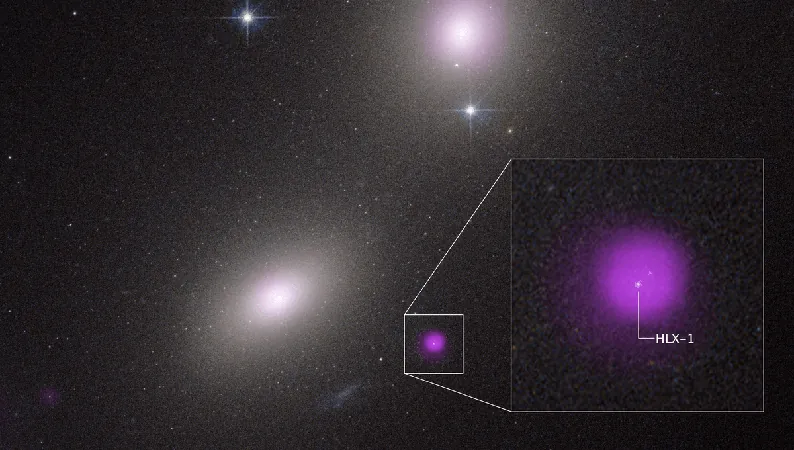
Unlocking the Secrets of Meteorite Impacts: USask Researcher’s Groundbreaking Innovations
2025-07-08
Author: Noah
Pioneering Research at USask
University of Saskatchewan's own groundbreaking researcher, Dr. Xie, is making waves in the field of geology by using cutting-edge laser and diamond technology to simulate the cataclysmic conditions of meteorite impacts. Her work not only charts the early stages of her career but also offers tantalizing insights into the age-old mystery of how these celestial events reshape planetary surfaces.
The Allure of Impact Craters
Impact craters dot the surfaces of rocky planets like Earth, Mars, and even the Moon, standing as silent witnesses to the violent history of our solar system. Xie’s fascination began with her PhD studies at the Mistastin Lake impact structure in Labrador, where she meticulously analyzed feldspar, a mineral that harbors invaluable historical data about past impacts.
Feldspar: The Rock that Remembers
"Feldspar has a remarkable memory," Xie explains. This common mineral is not only a keystone of our Earth’s crust but also offers clues to the geological histories of other planets. Through her research, Xie aims to decode how these impacts have altered feldspar and, by extension, the very surfaces of celestial bodies.
Harnessing High-Tech Tools for Discovery
Now an assistant professor in USask's Department of Geological Sciences, Xie is leveraging ultra-advanced synchrotron X-ray technology and lasers to simulate the extreme heat and pressure generated by meteorite impacts. This innovative approach allows her to dive deeper into understanding the transformative effects that meteorite collisions unleash on feldspar.
Unlocking the Mysteries of Diaplectic Glass
One riveting outcome of Xie's work is her discovery regarding diaplectic glass—an astonishing solid form of feldspar that emerges when subjected to the fierce conditions of an impact without melting. Another fascinating variant, maskelynite, is found in Martian meteorites and is produced through similar processes. However, the exact conditions that create these forms remain shadowy, making Xie’s research even more crucial.
A Revolutionary Method of Impact Simulation
To replicate meteorite impacts, Xie harnessed the advanced synchrotron facilities at Argonne National Laboratory in Illinois. By using an infrared laser for heat generation and a specialized diamond anvil for pressure, her team achieved unprecedented accuracy in determining the critical conditions needed to create diaplectic glass and maskelynite.
Seeing is Believing: Frame-by-Frame Analysis
Xie’s methodology contrasts sharply with earlier studies that relied on gas guns, which, while fast, failed to capture the gradual transformations of feldspar. Her slower, more deliberate approach enables scientists to observe the intricate details of how this mineral responds to escalating heat and pressure, thereby yielding new insights into planetary formation and evolution.
Unlocking the Secrets to Life Beyond Earth
In her pursuit of understanding, Xie posits that the way feldspar records the changes in planetary surfaces could illuminate what sets Earth apart from its celestial neighbors. "We’ll be one step closer to figuring out why Earth has life and is uniquely suited for it," she states, emphasizing the broader implications of her findings on our understanding of life in the universe.
Conclusion: The Future of Planetary Science
With her groundbreaking research now published in 'Science Advances', Dr. Xie's work represents a significant leap forward in our grasp of cosmic events that have sculpted our solar system. As she continues to unravel the complexities of meteorite impacts, the scientific community eagerly awaits how her findings will reshape our understanding of Earth and its planetary siblings.









 Brasil (PT)
Brasil (PT)
 Canada (EN)
Canada (EN)
 Chile (ES)
Chile (ES)
 Česko (CS)
Česko (CS)
 대한민국 (KO)
대한민국 (KO)
 España (ES)
España (ES)
 France (FR)
France (FR)
 Hong Kong (EN)
Hong Kong (EN)
 Italia (IT)
Italia (IT)
 日本 (JA)
日本 (JA)
 Magyarország (HU)
Magyarország (HU)
 Norge (NO)
Norge (NO)
 Polska (PL)
Polska (PL)
 Schweiz (DE)
Schweiz (DE)
 Singapore (EN)
Singapore (EN)
 Sverige (SV)
Sverige (SV)
 Suomi (FI)
Suomi (FI)
 Türkiye (TR)
Türkiye (TR)
 الإمارات العربية المتحدة (AR)
الإمارات العربية المتحدة (AR)